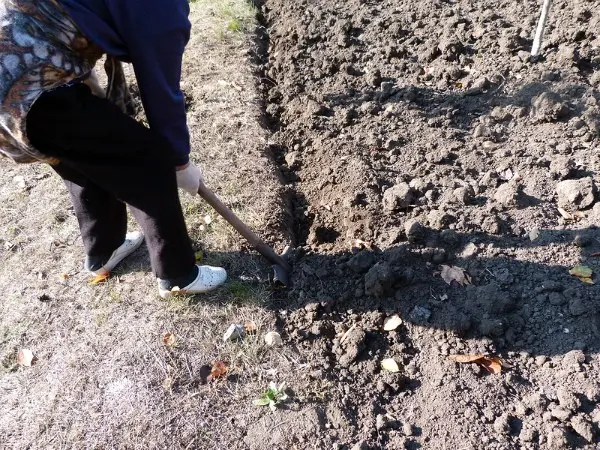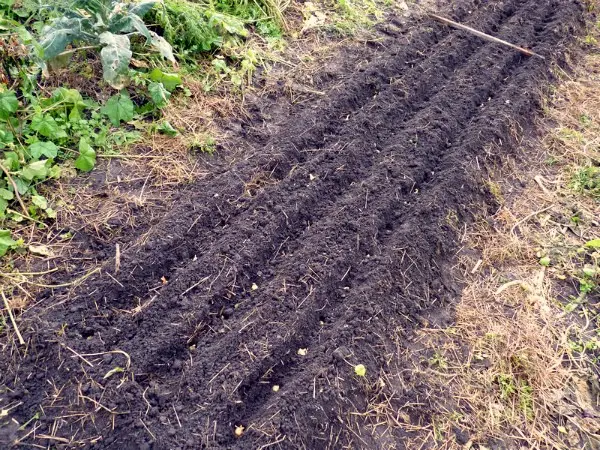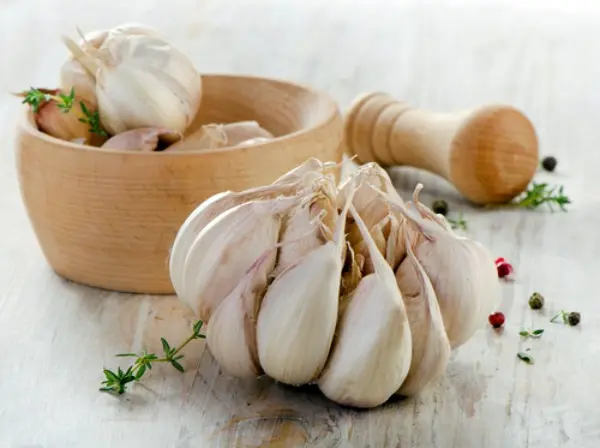Contents
The wide popularity of garlic is due to its vitamin composition and antibacterial properties. No wonder it is called a home pharmacy – if you regularly eat it, then no medicines will be needed. Garlic is grown in every suburban or household plot, it grows in greenhouses and in the open field. But not everyone knows that the technology for growing garlic of different types is somewhat different.
Types of garlic
All numerous varieties of garlic are divided according to the timing of cultivation into two main types: spring and winter. And winter, in turn, is divided into shooters and non-shooters. Spring, as you know, is planted in the spring. It is perfectly stored until the new harvest, so it is grown with an eye on harvesting. The teeth in its bulb can be large and small, they are arranged in several levels or layers. It does not form arrows.
Winter crops are planted in the fall, they are stored much less than spring crops, but yield more. Its heads are usually larger, and the teeth are arranged in one layer.
The non-shooting species is stored better; under certain conditions, it can lie until spring. Its disadvantage is that it gradually degenerates, multiplying with teeth, accumulates infections, and loses productivity. Here his archer fellow comes to the rescue. The fact is that infections and diseases, signs of degeneration are transmitted from generation to generation through the teeth. And garlic, which forms arrows, concentrates its entire varietal gene pool in air bulbs, but diseases do not penetrate into them.

Bulbs allow you to restore garlic – healthy and fruitful. After two years, full-fledged bulbs grow from them – large and healthy. For the first year, single teeth are obtained, which can be perfectly eaten, they also become planting material, from which the variety is renewed.
Growing winter garlic
Winter garlic is planted in open ground in autumn, and harvested in the second half of summer. Its bulbs and greens are eaten from spring – just when the body really needs vitamins, and other greens are just starting to grow. That alone is worth growing. He does not cause much trouble to the gardener, you just need to carefully consider his predecessors, plant garlic where legumes, pumpkin or cabbage used to grow.
When to plant
It is planted a month before the arrival of frost. It is best if the teeth have time to take root well, but the sprouts do not appear on the surface of the earth – then they will winter painlessly, and with the first warmth, as soon as the earth thaws and the snow melts, they will grow. But with this moment (correct landing) it is difficult to decide. Garlic is not very afraid of frost. If it has already sprouted, then it can simply be covered until the snow falls or even for the whole winter with a mulch of sawdust mixed with the ground, or non-woven material.

It is very important to prepare the bed 3-4 weeks before planting. They dig it up, fertilize it, water it and leave the earth to lie down.
Garlic, especially winter garlic, loves high beds so that they are not flooded with floods. Excessive dampness, swampiness for its bulbs is worse than frost.
If winter comes at the end of November, then traditionally everyone advises to plant winter garlic no earlier than October. But there is information that garlic planted in August gave a much better harvest than planted a month and two later. Only an experiment can dot the “and” here.
How to plant
The bulbs are disassembled just before planting on the cloves, disinfected.
The teeth are planted in open ground in rows every 10-15 centimeters, it depends on the size. The larger the planting material, the larger the bulb will grow from it, which means that such plants should be planted less often. Therefore, the teeth are calibrated before planting.
Between rows leave up to 25 centimeters.

The planting material is usually deepened to 6–7 centimeters, but there is another alternative method of planting. It was invented from a lack of space on the principle of “need for inventions is cunning.” The bottom line is to plant two tiers – the first one is planted at a depth of 12 centimeters, they fall asleep, and another one is planted above it at a depth of 6-7 centimeters. The garlic of the lower tier feels fine, the frost will not get to it, the roots of the upper tier will not interfere with it – all plants grow well. The main thing is to carefully dig up the crop.
Some gardeners prefer not to plant neatly in the holes, but simply sow the teeth. They claim that the result is the same, only the sown garlic looks not so even, it has leaves and arrows on its side.
Additional fertilizing
As soon as the snow melts, the active growth of greenery will begin. At this time, garlic is fed with a solution of biohumus, mullein or bird droppings. Between the rows of plants, rotted manure is laid out or ash is poured, which will help protect seedlings from pests. When the fourth leaf appears, they are fed with urea, and when the bulb is formed, superphosphate is added. Top dressing can be combined with watering. After mid-May, fertilizers are no longer applied, growing heads draw strength from the greenery.

Growing spring garlic
For spring garlic, when grown in open ground, it is also desirable to form high beds from fertile land. If necessary, before planting (but better in autumn), the soil is fertilized with humus, rotted manure or compost. As a rule, the teeth of a spring vegetable are smaller than those of a winter vegetable, and they are planted more often – after 6–7 centimeters, up to 25 centimeters are left between rows.
Traditional landing method
Usually, spring varieties are planted in open ground in mid-April. Before planting, the heads are disassembled, calibrated, planted to a depth of 2-3 centimeters. And then the aisles are loosened, weeds are removed, the plantings are watered. If you mulch them, then you will have to water and weed much less often.
germinated teeth
Usually spring garlic is stored at a temperature of about +20 degrees. In the last days of March, the heads are disassembled into teeth, soaked for 3 hours with water at room temperature, and then transferred to the cellar. There they need to be laid out in a thin layer (in one row), covered with a film and a cloth. Such conditions will provoke the growth of roots. When they reach from 2 to 5 centimeters – it’s time to plant in open ground.

garlic care
Plantings of spring garlic are fed in the same way as winter garlic: when shoots appear, then 10 or 12 days after the first feeding, then closer to the end of June. They use compost, mullein, bird droppings – they make solutions and liquid chatter. Ashes are scattered between the rows. They make sure that the roots have enough moisture, in the absence of rain they water. All the time you need to get rid of weeds and loosen the earth.
Winter garlic is harvested in the second half of July, and spring garlic is harvested from late August to mid-September. In July, the signal for harvesting is a bursting inflorescence, in which aerial bulbs ripen (not all arrows are broken out, some plants are left in order to be able to improve the culture). And the spring is harvested when the lower leaves dry out.
Vegetables must be picked from the ground and spread out to dry. You can not cut the leaves before they are completely dry – up to this point, the growth of heads continues, and from the leaves they take useful substances for this. After the leaves have completely dried, they are cut off, leaving no more than 5 centimeters, and the vegetables are removed for storage.

After a few years, it is advisable to completely change the planting material in order to renew and improve your garlic.
This is done with air bulbs. When the inflorescence bursts, the bulbs acquire color, they are cut off and placed in a dry room for ripening, then they are sorted out. For further work, you will need air bulbs of at least 4 or 5 millimeters.
In early October, these air bulbs are planted in the garden and grown like winter plantings. By August next year, single-toothed ones will form from them. They are then used for winter plantings to get normal garlic. But you can do it differently – do not dig them out in the summer, but leave them in the ground. In the spring, the plantings are thinned out, while they get a wonderful vegetable for the table, and by mid-summer or a little later they get full-fledged garlic.
There is another way, when the air bulbs are planted in early June, let them grow until next summer. They winter well, and then by the summer they develop full-fledged heads.
Video “Care for winter garlic”
See how the principles of organic farming are used in the cultivation of winter garlic.









